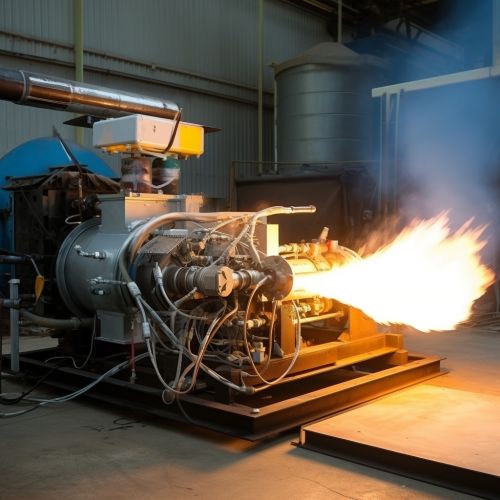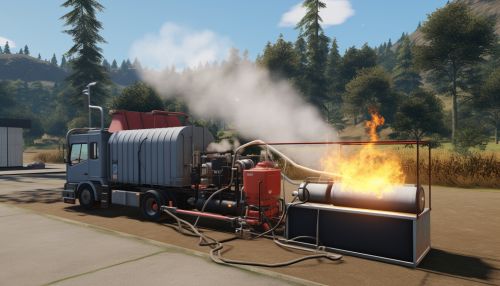Fixed bed gasifier
Introduction
A fixed bed gasifier is a type of gasifier that operates with a stationary bed of fuel, usually coal or biomass. This technology has been used for over a century and is still a common method of gasification today. The process involves the conversion of carbonaceous materials into a synthetic gas, or syngas, which can be used for a variety of applications, such as electricity generation, chemical synthesis, and fuel production.
Principles of Operation
The operation of a fixed bed gasifier involves several steps. First, the fuel is fed into the top of the gasifier and is dried and heated as it moves downwards. This is followed by pyrolysis, where the fuel is decomposed into char, tar, and gases. The char then undergoes reduction reactions with steam and carbon dioxide to produce syngas. The syngas is then cleaned and conditioned before being used for its intended application.
Types of Fixed Bed Gasifiers
There are two main types of fixed bed gasifiers: updraft and downdraft. In an updraft gasifier, the air or oxygen and steam are introduced at the bottom of the gasifier and move upwards through the fuel bed. This design has the advantage of being simple and robust, but it produces a gas with a high tar content, which can cause problems in downstream equipment.
In a downdraft gasifier, the air or oxygen and steam are introduced at the top of the gasifier, and the gas moves downwards through the fuel bed. This design produces a gas with a lower tar content, but it requires a more uniform fuel size and has a lower tolerance for fuel moisture.
Applications
Fixed bed gasifiers are used in a variety of applications. They are commonly used in small-scale power generation systems, where the syngas is used to fuel an internal combustion engine or a gas turbine. They are also used in larger-scale integrated gasification combined cycle (IGCC) power plants, where the syngas is used to fuel a gas turbine, and the waste heat is used to generate steam for a steam turbine.
In addition to power generation, fixed bed gasifiers are used in the production of chemicals and fuels. The syngas can be used as a feedstock for the production of methanol, ammonia, and other chemicals. It can also be converted into liquid fuels through the Fischer-Tropsch process.
Advantages and Disadvantages
Fixed bed gasifiers have several advantages. They are relatively simple and robust, and they can operate with a wide range of fuels, including low-grade fuels. They also have a high carbon conversion efficiency, which means that they can extract a large amount of energy from the fuel.
However, fixed bed gasifiers also have some disadvantages. They produce a gas with a high tar content, which can cause problems in downstream equipment. They also require a relatively uniform fuel size, and they have a lower tolerance for fuel moisture compared to other types of gasifiers.
Future Developments
While fixed bed gasifiers are a mature technology, there are still opportunities for improvement. Future developments may include advances in gas cleaning and conditioning technologies, improvements in fuel flexibility, and the integration of gasification with other processes, such as carbon capture and storage.


